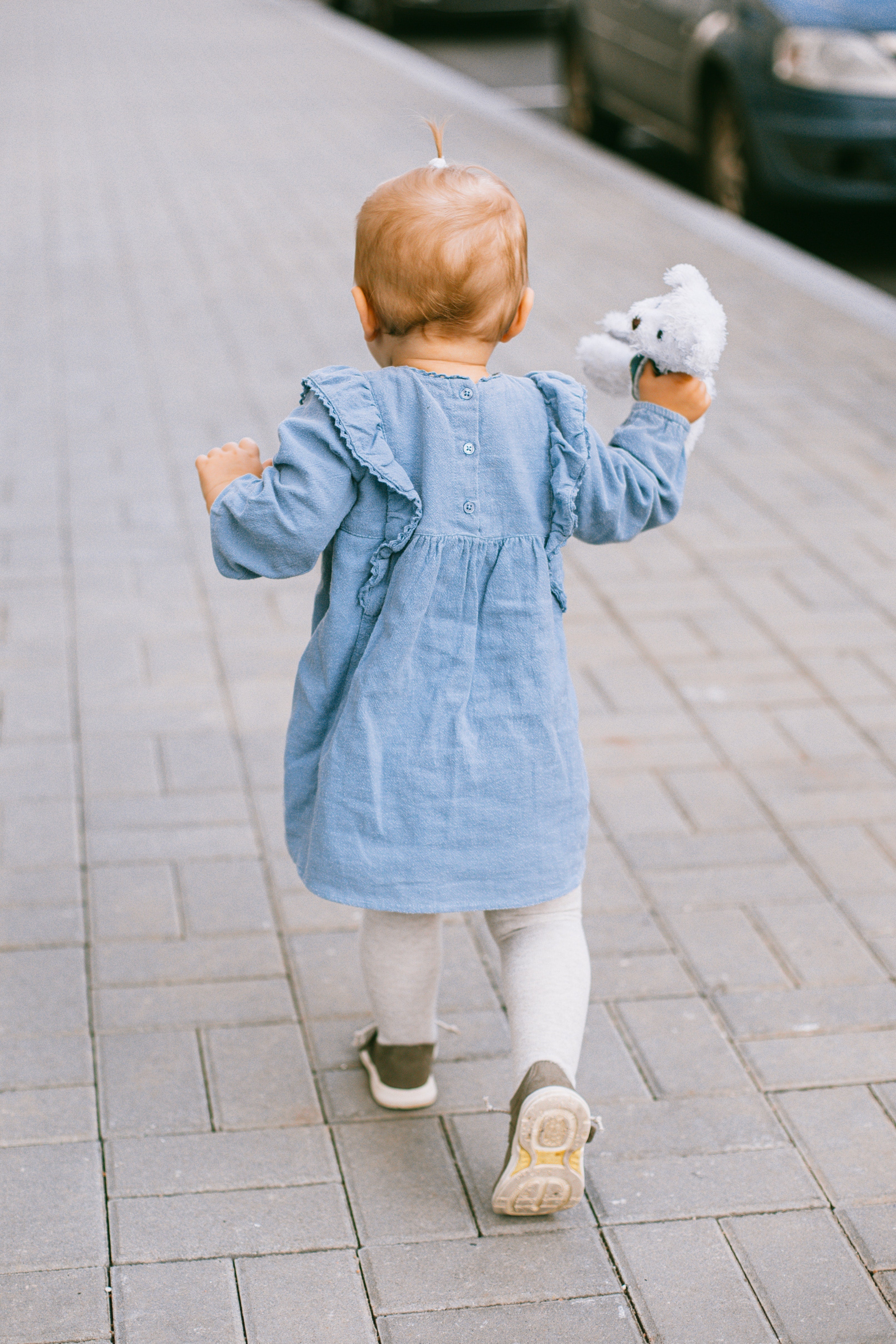Most babies are eager to get around and explore the world. As your baby becomes more independent and able to grab items, consider baby proofing your home and moving any dangerous items to higher places, well out of baby's reach. Every child will develop at their own pace and this is prevalent when they're learning to walk. The journey of learning to walk begins with learning to roll, sit up and crawl. Later, baby will pull themselves up to standing, and 'cruise' holding on to furniture. The last stage is independent walking.
How will I know my baby is ready to walk?
When your baby can roll over and sit up independently, the next step is crawling. Crawling is important to build upper limb stability and core strength. Encourage crawling with plenty of supervised 'tummy time', where your baby lies on their tummy to play with toys in front of them. It's best to introduce tummy time in short bursts initially, then build up to around 20-30 minutes a day. Toys such as 'Skip Hop Explore & More Follow Bee Crawl Toy' can provide stimulation and interest, and once the toy is mobilised, your child will be eager to follow it! Remember to give them plenty of positive reinforcement when they catch up to it.
Skip Hop Explore & More Follow Bee Crawl Toy
Confident crawlers will love a baby jumper, such as 'Skip Hop Explore and More Jumpscape' for the chance to be upright and exercise their legs. Very occasionally, some babies will skip the crawling stage, but most babies will crawl. If your baby doesn't crawl and instead tries to walk first, make sure they still get plenty of tummy time.

'Skip Hop Explore and More Jumpscape'
Cruising
All that tummy time and crawling will give your baby good upper body strength, key for 'cruising'. They can pull themselves up into a standing position using objects to support them and shuffle holding on to these supports. Try placing their favourite toy on a chair or sofa arm at this stage, to encourage them to pull themselves up in order to play with it. Give plenty of encouragement once they achieve the upright position. Supervision is important to make sure they are only using safe objects for support. An ideal way to encourage this is through lots of praise, or providing a stimulating, standing-height toy such as Skip Hop Explore and More Babys View 3 Stage Activity Centre


Skip Hop Explore and More Babys View 3 Stage Activity Centre
This will encourage baby to spend more time in their upright position. Floor toys and tummy time are still important for development, but remember to shift the focus off the floor occasionally to encourage walking over crawling.
Independent standing and walking
This can take a while- many babies cruise for a long time before starting to take independent steps. At this stage, some parents prefer to introduce soft, comfortable shoes, to help baby get used to wearing them. This can help stop them from removing their shoes when they're out and about! 'Bobux Soft Sole Baby Shoes'. Hand holding and lots of praise will encourage the transition from cruising to walking. Hold onto baby's hands and walk with them, just a few steps at a time. Kneeling on the floor in front of baby means they can see your face, and feel safe and reassured.

Once they can do this, have baby walk to you! Once they start to turn away from their supporting object and try independently, stand a very short distance away from them and encourage them to come toward you. Don't move away- this will only frustrate your little one. Instead let them reach you, and then give lots of smiles and a cuddle, so they're motivated to try again. If they fall down, help them to stand back up and encourage them to try again. Standing back up is preferable to baby crawling toward you.
Above all, you'll notice that the age ranges for each stage overlap, because each child learns to walk at their own pace. Some children stay in the crawling or cruising stages for a long time, but they will all get there in the end. After that, the hard part is stopping them!






